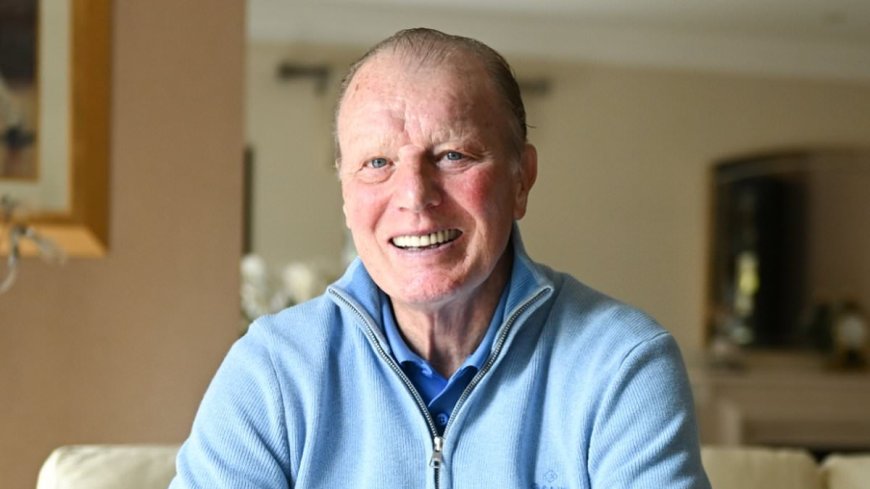Why Arsenal's set-piece prowess is nothing new – revealed by the original masters of the clever corner, writes MATT BARLOW
Arsenal’s threat from set-pieces got me thinking about Dave Bassett, who once figured out his Wimbledon team at their peak scored on average from every 13 corners. ‘Good delivery, clever movement, decoy runs, blocks, lots of variation,’ said Bassett when he picked up the phone. ‘Arsenal are working hard on it and they’re having success […]

Arsenal’s threat from set-pieces got me thinking about Dave Bassett, who once figured out his Wimbledon team at their peak scored on average from every 13 corners.
‘Good delivery, clever movement, decoy runs, blocks, lots of variation,’ said Bassett when he picked up the phone. ‘Arsenal are working hard on it and they’re having success but the way everybody is going on as if they’ve made some wonderful new discovery, what a load of old codswallop.’
It’s reassuring to know he’s combative as ever at 80. Wimbledon weren’t the only team doing set pieces well in the 1980s but nobody did it better.
Bassett’s fascination with the subject started when he represented England amateurs and played under Charles Hughes, who became the much-maligned director of FA coaching at the FA.
‘We beat West Germany 1-0 with a flick on at near post and I realised it was a good way to win tight games,’ said Bassett.
Hughes, who died this year at the age of 91, was among those inspired by early data analysis of Charles Reep, whose statistical work on positions of maximum opportunity is often blamed for the rise of the long-ball game.

Arsenal are sitting third in the Premier League table with an impressive return from set-pieces


Arsenal’s Jurrien Timber, center right, heads the ball to score his side’s first goal during their clash with Manchester United at the Emirates on December 4


Arsenal ‘s threat from set-pieces got me thinking about Dave Bassett, who once figured out his Wimbledon team at their peak scored on average from every 13 corners
At Wimbledon, Bassett had dead-ball experts like Dennis Wise, Wally Downes and Glyn Hodges who spent hours perfecting their delivery using a coloured shirt wrapped around a goal post to indicate the required height.
He had aerial prowess, too. Not merely big players who could head it but those who fought through crowds despite the dangers just to get on the end of crosses.
The prime target was usually Alan Cork, who devised many routines himself before nurturing them through his own coaching career.
‘I’d lie in bed at night thinking about free-kicks and corners, trying to find a new one,’ said Cork. He scribbled them all down in a notebook until it was lost (he suspects stolen) while working at Coventry.
His son Jack, now coaching Burnley’s Under 21s, mines him for his favourites. ‘Forget about the ball and worry about your job,’ is Cork Sr’s top tip. ‘If your job is to hit the near post hit the near post.’
Wimbledon’s finest hour, the 1988 FA Cup win against Liverpool came down to a set piece, a free-kick out wide, clipped by Wise towards Cork attacking the near post. It was overhit but they factored this in.
Lawrie Sanchez’s job was to shadow Cork’s run in case it was overhit and his glancing header beat Bruce Grobbelaar.
Cork scored a winner at Anfield the previous season after Bassett had spliced VHS footage to demonstrate how Liverpool’s near-post defender vacated his post to follow a runner and the gap he left was seldom plugged.


At Wimbledon, Bassett had dead-ball experts like Dennis Wise (pictured above while playing for Chelsea), Wally Downes and Glyn Hodges who spent hours perfecting their delivery


Wimbledon’s Vinnie Jones kisses the cup which is held by Terry Phelan, as Dennis Wise looks on
So, they devised a plan. Hodges lured the defender away, Mark Morris moved in and flicked Wise’s corner on and Cork headed in at the back post.
‘We were so good we thought we’d always score one,’ said Cork. ‘We were one up before we started. Get everything right and it was very difficult to defend.’
Confidence grew. Cork recalls a disagreement with a coach from Oxford United while on an FA course. ‘He was trying to do zonal marking and I said, ‘I’m not being rude, but I’ve just scored five against you because of your zonal marking’.’
Dave Kemp was on Bobby Gould’s coaching staff at Wimbledon when they won the FA Cup and went on to make set pieces central to a successful coaching career.
He recognised them as David’s slingshot against Goliaths and refined them during 20 years defying gravity with clubs such as Stoke City and West Bromwich Albion as assistant to Tony Pulis.
‘It’s about the delivery but it’s about the timing of the run and the angle of the run opening spaces,’ says Kemp. ‘Nobody can stop what Arsenal are doing because most of them are marking zonally.
‘Five or six players making runs from the back of the box, good delivery and defenders can’t see them because they’re looking at the ball and static, underneath the ball at the point of contact. I’d think about marking the front and back zones and the rest man-to-man.’
Kemp has retired to California but rarely misses a game on TV and finds himself looking out for new set pieces routines. The irony that Arsenal have become new masters of the craft is not lost on him.


Bassett (pictured with the original Wimbledon Crazy Gang) is now 80 years old


Bassett pictured celebrating Sheffield United’s promotion alongside Tony Agana
Arsene Wenger disparaged Stoke as ‘a rugby team’ because of their strength at set pieces, including Rory Delap’s long throws.
Now Mikel Arteta and Nicolas Jover are building a title bid on set-piece power, exceptional delivery and big players, strong in the air with genuine desire to get their head on the ball, imaginative routines, and all the modern digital video and data analysis software.
It is heralded like a new branch of footballing science but that’s perception for you.












































